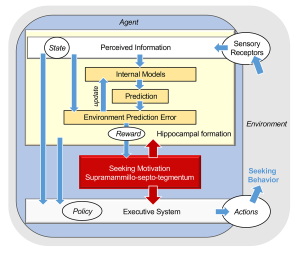 Reviews To Read – March 2022.
Reviews To Read – March 2022.
Published in Progress in Neurobiology and Coauthored by Satoshi Ikemoto of the NIDA IRP Neurocircuitry of Motivation Section.
Little is known about neural substrates of curiosity and exploratory behavior. We refer to such behavior as information-seeking behavior and propose 1) key neural substrates and 2) the concept of environment prediction error as a framework to understand information-seeking processes. The cognitive aspect of information-seeking behavior involves, in part, the pathways from the posterior hypothalamic supramammillary region to the hippocampal formation. The vigor of such behavior is modulated by the supramammillo-septo-ventral tegmental pathway. Phasic responses of dopaminergic neurons are characterized as signaling potentially important stimuli rather than rewards. This paper describes how novel stimuli and uncertainty trigger seeking motivation and how these neural substrates modulate information-seeking behavior.
Seeking motivation and reward: Roles of dopamine, hippocampus, and supramammillo-septal pathway Journal Article
In: Prog Neurobiol, vol. 212, pp. 102252, 2022, ISSN: 1873-5118.
